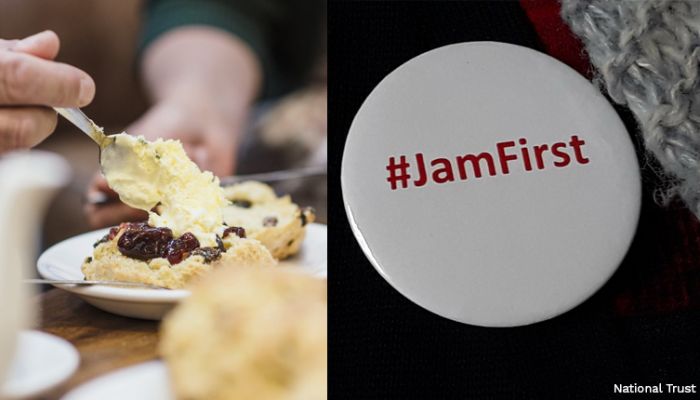3 Crisis Comms lessons with Jam and Cream
The National Trust got themselves into a jam over the weekend, foolishly advertising a Mother’s Day cream team in Cornwall, with a picture of a scone where the cream was put on first!
Outrageous, huh? For those that didn’t know, cream then jam is how people in Devon have their scones, while jam then cream is the Cornish way (most middle class dispute ever? – scone rhymes with gone, FYI).
Needless to say(!), the locals in Cornwall were ‘angered’ (as reported by the BBC) at the mistake made by the National Trust’s Lanhydrock property in Bodmin. Some said they would cancel their memberships over the blunder, some said it was ‘horrifying’ and some even went as far as to say it ‘made them feel sick’. Quite.
So, what did the National Trust do to remedy the situation AND totally ace their crisis comms?
The Trust came out all guns blazing, apologising and printing #JamFirst badges for all staff to wear, in support of ‘a proper cream tea’. They also clarified that any ‘rumour’ they were renaming the property to ‘Jamhydrock’ had no truth.
In a Facebook post, they explained that the member of staff responsible for the original offending post had been ‘reprimanded’ and ‘marched back over the Tamar’ (the river that forms most of the border between Cornwall and Devon). They assured their ‘Cornish community’ that the ‘catering team would never make such a heinous mistake’. Also, that the jam and cream are served in little pots so, ‘the order of their application is not subject to such appalling error’.
The post concluded: ‘Rest assured, your mothers are safe here’.
The post managed headline news at a number of outlets, all of which painted the National Trust in a good light despite this being their ‘crisis’.
What should the PR industry learn from this?
- Don’t underestimate how much an issue matters
Outside of Devon and Cornwall, this argument might seem trivial* but the order is a genuine part of both counties’ identities and this really does matter to locals. Can you imagine the national scandal if a UK Prime Minister declared they preferred Bratwurst to British bangers? Good crisis comms approaches problems with empathy, not sympathy; don’t look at the situation as you see it, step into the shoes of those affected. - Use humour
This obviously depends on the crisis and wouldn’t be appropriate for all problems. By using humour to respond so dramatically (tongue firmly in cheek), the National Trust made this issue seem more serious a crisis that they then had to tackle. It was the Trust’s sense of fun – marching the offending employee back over the Tamar, for example – that helped the story to gain traction in the press. Most importantly, the humour wasn’t making fun of anyone but making light of the problem. - Don’t forget to follow up
The mistake, still on the property’s Facebook page, was followed by the humorous apology. But it was arguably the badges that really helped take the story to the next level (and gain nationwide attention). Using a second Facebook post, and for presumably little cost, the Trust has managed to follow up, support the original victims of offense and gain positive coverage. Every crisis should teach you lessons, and showing that you’ve learnt from your mistake is vital to conclude a successful crisis comms process.
*Though the disagreement has just started in our office – PR Club is all for cream first, because it’s like the butter and needs a firmer base to spread on. Disagree? Tell us on Twitter @Vuelio.





Leave a Comment